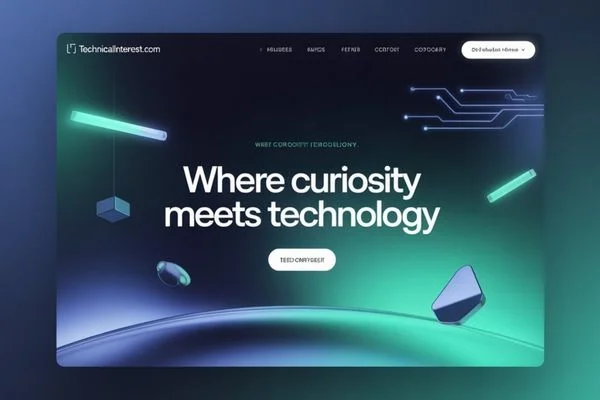
Source: Foxtechview.com
Introduction:
The tech giants envision future beyond smartphones revolution that began nearly two decades ago is approaching its next evolutionary leap. While these pocket-sized computers transformed how we communicate, work, and navigate daily life, technology leaders are now orchestrating the transition to a post-smartphone era. This shift isn’t just about upgrading hardware—it’s about fundamentally reimagining how humans interact with digital technology.
The End of an Era: Why Smartphones Are Reaching Their Limits?
The smartphone market has reached a critical inflection point. After years of incremental improvements in camera quality, processing power, and battery life, consumer excitement has plateaued. Tech giants are investing in spatial computing (AR/VR), advanced wearables, AI-driven assistants, and ambient technology to create a more integrated and screen-less digital ecosystem.
Key Indicators of Market Saturation:
- Declining Innovation Impact: New features no longer drive significant consumer upgrades
- Extended Replacement Cycles: Users keep smartphones longer than ever before
- Market Maturity: Growth rates have slowed across all major markets
- User Fatigue: Increasing awareness of screen time and digital wellness concerns
The writing is on the wall: the next chapter of digital interaction will be more immersive, intuitive, and seamlessly integrated into our daily lives.
The Big Picture: How Tech Giants Envision Future Beyond Smartphones Are Positioning?
Major technology companies are placing massive bets on post-smartphone technologies, with investments reaching unprecedented levels. Here’s how the industry leaders are approaching this transformation:
Investment Comparison Table
| Company | Technology Focus | Investment Level | Target Timeline | Key Advantage |
|---|---|---|---|---|
| Apple | Mixed Reality (Vision Pro) | $10+ billion annually | 2025-2027 | Premium integration ecosystem |
| Meta | VR/AR Social Platforms | $13+ billion annually | 2025-2030 | Social connectivity & affordability |
| Android XR Platform | $8+ billion annually | 2025-2026 | Open ecosystem approach | |
| Samsung | Integrated Hardware | $5+ billion annually | 2025-2026 | Manufacturing expertise |
| Microsoft | Enterprise Mixed Reality | $3+ billion annually | 2025-2027 | Business solutions focus |
The Wearable Revolution: Smart Devices Replace Smartphones
The most immediate replacement for smartphones will likely come from advanced wearable devices. These aren’t just fitness trackers or smartwatches—they’re sophisticated computing platforms designed to eliminate the need for traditional screens.
Three Categories of Smartphone Replacements:
1. Augmented Reality Smart Glasses
- Functionality: Overlay digital information directly onto the physical world
- Current Leaders: Apple, Meta, Google, Samsung
- Timeline: Mass market adoption expected by 2026-2027
- Key Features:
- Voice-activated controls
- Gesture recognition
- Real-time translation
- Navigation assistance
- Hands-free communication
2. AI-Powered Wearable Assistants
- Functionality: Proactive computing without visual interfaces
- Examples: Humane AI Pin, advanced smartwatches
- Timeline: Early adopters using now, mainstream by 2025-2026
- Key Features:
- Contextual awareness
- Predictive assistance
- Voice-first interaction
- Seamless device integration
3. Ambient Computing Systems
- Functionality: Technology embedded in environments rather than devices
- Components: Smart surfaces, voice systems, gesture recognition
- Timeline: Gradual rollout 2025-2030
- Key Features:
- Invisible integration
- Multi-user support
- Environmental responsiveness
- Continuous availability
Market Analysis: The Competition Heats Up
Global VR headset shipments fell 12% YoY in 2024, marking their third consecutive year of declines due to continued weak consumer demand. However, this temporary setback hasn’t deterred major investments in next-generation technologies.
Current Market Dynamics:
Virtual Reality Market Performance (2024)
- Meta continued to dominate the global VR market in 2024, capturing 77% of the shipments
- In Q4 2024, the availability of the Meta Quest 3S boosted Meta’s market share to 84%
- Shipments of Apple’s Vision Pro declined in Q4 after the initial hype
Augmented Reality Outlook (2025)
- We expect the global AR smart glasses market to rebound in 2025, achieving over 30% YoY growth through 2026, driven by the potential entry of major tech giants
- The integration of AR and AI, along with new market entrants, will drive over 30% YoY growth
Company-Specific Strategies: Who’s Leading the Charge?
Apple’s Premium Vision Strategy
Apple continues to bet on premium experiences with high-end devices. The company’s approach focuses on:
Key Elements:
- Premium Positioning: $3,499 Vision Pro targets professional and early adopter markets
- Ecosystem Integration: Seamless connection with existing Apple devices
- Quality Focus: Superior display technology and user experience
- Developer Support: Comprehensive tools for spatial computing applications
Challenges:
- High price point limits mass market appeal
- Shipments of Apple’s Vision Pro declined in Q4 after the initial hype
- Need for more compelling consumer applications
Meta’s Mainstream Accessibility Approach
Meta’s strategy centers on making immersive technology accessible to everyday consumers:
Key Elements:
- Affordable Pricing: Quest 3 at $499 targets mainstream adoption
- Social Integration: Focus on connecting people through virtual experiences
- Gaming Emphasis: Strong gaming ecosystem drives initial adoption
- Continuous Innovation: Regular hardware updates and feature additions
Market Position:
- Meta continued to dominate the global VR market in 2024, capturing 77% of the shipments
- 2024 has seen a solid recovery, powered by Meta Quest 3
Google and Samsung’s Collaborative Push
Meta Quest 3 and Apple Vision Pro just got fresh competition from Google and Samsung, with their joint approach focusing on:
Strategic Partnership Benefits:
- Hardware Excellence: Samsung’s manufacturing capabilities
- Software Platform: Google’s Android XR operating system
- Market Positioning: Samsung wants to produce a headset that’ll cost between $1,000 and $1,500
- Technical Specifications: Samsung’s headset will be capable of advanced tracking and MR (mixed reality) capabilities
The Technology Behind the Transformation
Artificial Intelligence Integration
Modern AI capabilities are crucial for post-smartphone devices to function effectively:
AI Applications in Next-Gen Devices:
- Natural Language Processing: Voice commands and conversational interfaces
- Computer Vision: Object recognition and spatial understanding
- Predictive Analytics: Anticipating user needs and preferences
- Contextual Awareness: Understanding environmental and situational factors
Hardware Innovations
The transition beyond smartphones requires significant hardware advances:
Critical Technology Improvements:
- Battery Technology: Longer-lasting power sources for continuous use
- Display Technology: High-resolution, low-power screens for wearables
- Processing Power: Efficient chips for complex real-time computing
- Sensor Technology: Advanced cameras, microphones, and environmental sensors
Real-World Applications: How Life Changes Post-Smartphone
Daily Life Transformations
Morning Routine Evolution:
- Traditional: Check phone for weather, news, calendar
- Future: Information appears automatically through smart glasses or ambient displays
Work Environment Changes:
- Traditional: Multiple screens and devices for productivity
- Future: Spatial computing allows infinite virtual workspace
Social Interaction Improvements:
- Traditional: Looking down at phones during conversations
- Future: Hands-free communication maintains eye contact and engagement
Industry-Specific Applications
| Industry | Current Smartphone Use | Post-Smartphone Solution | Benefits |
|---|---|---|---|
| Healthcare | Medical apps, patient records | AR surgical assistance, ambient monitoring | Improved precision, hands-free operation |
| Education | Learning apps, research | Immersive learning environments | Enhanced engagement, experiential learning |
| Retail | Shopping apps, payments | Virtual try-ons, ambient checkout | Seamless shopping experience |
| Manufacturing | Quality control, communication | AR instructions, predictive maintenance | Reduced errors, improved efficiency |
| Transportation | Navigation, communication | Heads-up displays, autonomous integration | Safer driving, optimized routes |
The Timeline: When Will This Transformation Happen?
Phase 1: Early Adoption (2025-2026)
Characteristics:
- High-end devices for professionals and enthusiasts
- Limited mainstream adoption
- Smartphone coexistence rather than replacement
- Price points above $1,000 for quality devices
Key Milestones:
- Samsung’s mixed reality headset launch
- Apple Vision Pro price reduction
- Google Android XR platform expansion
- First-generation AI wearables hit market
Phase 2: Market Expansion (2027-2029)
Characteristics:
- Prices drop to $300-$800 range
- Improved battery life and usability
- Smartphones become secondary devices
- Business adoption accelerates
Expected Developments:
- Mass production reduces costs
- Battery technology breakthroughs
- 5G/6G infrastructure supports real-time computing
- Developer ecosystems mature
Phase 3: Mass Adoption (2030+)
Characteristics:
- Ambient computing becomes standard
- Smartphones serve specialized functions only
- Children grow up with immersive interfaces
- Society adapts to screen-free interaction
Long-term Vision:
- Invisible computing integration
- Seamless indoor/outdoor experiences
- Enhanced human cognitive abilities
- New forms of creativity and expression
Challenges and Obstacles: What Could Slow Progress
Technical Challenges
Current Limitations:
- Battery Life: Extended use remains problematic
- Processing Power: Real-time rendering demands significant resources
- Display Quality: Achieving smartphone-level clarity in wearables
- Connectivity: Reliable, low-latency network requirements
Social and Cultural Barriers
Adoption Challenges:
- Privacy Concerns: Always-on devices raise surveillance worries
- Social Acceptance: Wearing technology in public settings
- Digital Divide: Cost barriers for widespread adoption
- Behavioral Change: Breaking deeply ingrained smartphone habits
Economic Factors
Market Obstacles:
- Development Costs: Massive R&D investments required
- Manufacturing Complexity: New production processes and materials
- Infrastructure Needs: 5G/6G networks and edge computing
- Consumer Spending: Economic conditions affect luxury technology adoption
The Human Impact: Benefits and Concerns
Positive Transformations
Enhanced Human Capabilities:
- Augmented Intelligence: AI assistance improves decision-making
- Spatial Computing: Three-dimensional interaction possibilities
- Hands-Free Operation: Safer driving and more natural interaction
- Accessibility: Voice and gesture controls help users with disabilities
Social Benefits:
- Improved Eye Contact: Less screen looking during conversations
- Enhanced Presence: More engaged with physical environments
- Collaborative Possibilities: Shared virtual spaces for remote work
- Educational Opportunities: Immersive learning experiences
Potential Drawbacks
Technology Concerns:
- Always-On Surveillance: Privacy implications of constant monitoring
- Reality Distortion: Blurred lines between physical and digital worlds
- Addiction Potential: New forms of technology dependence
- Social Isolation: Virtual interactions replacing physical presence
Health Considerations:
- Eye Strain: Extended AR/VR use effects
- Cognitive Load: Processing augmented information streams
- Physical Health: Reduced physical activity from immersive experiences
- Mental Health: Impact on attention spans and social skills
Investment Landscape: Following the Money
Corporate Investment Trends
R&D Spending by Company (2024-2025):
- Meta: $13+ billion annually on Reality Labs
- Apple: $10+ billion on mixed reality and spatial computing
- Google: $8+ billion on Android XR and AI integration
- Samsung: $5+ billion on display and wearable technology
- Microsoft: $3+ billion on enterprise mixed reality solutions
Venture Capital Activity
Funding data shows that backing for AI and self-driving has steadily increased, rising from $39.96 billion in 2019 to $105.36 billion by 2025. This massive investment indicates strong confidence in transformative technologies.
Investment Categories:
- Hardware Development: Display technology, sensors, processors
- Software Platforms: Operating systems, development tools
- Content Creation: Applications, games, productivity tools
- Infrastructure: 5G/6G networks, edge computing, cloud services
Global Perspectives: How Different Regions Are Responding
Regional Adoption Patterns
North America:
- Focus: Premium consumer experiences and enterprise applications
- Leaders: Apple, Meta, Google, Microsoft
- Challenges: Privacy regulations and consumer skepticism
Asia-Pacific:
- Focus: Manufacturing excellence and cost-effective solutions
- Leaders: Samsung, Sony, Chinese manufacturers
- Advantages: Strong hardware capabilities and early adopter markets
Europe:
- Focus: Privacy-first approaches and regulatory compliance
- Challenges: Slower adoption of new technologies
- Opportunities: Strong enterprise and industrial applications
Preparing for the Transition: What Users Should Know
For Consumers
Preparation Steps:
- Stay Informed: Follow developments in AR/VR and AI technologies
- Experiment Early: Try available devices to understand capabilities
- Consider Privacy: Understand data collection and privacy implications
- Budget Planning: Prepare for gradual technology upgrades
- Skill Development: Learn voice commands and gesture controls
For Businesses
Strategic Considerations:
- Employee Training: Prepare workforce for new interaction paradigms
- Infrastructure Planning: Ensure network and computing capabilities
- Application Development: Consider spatial computing opportunities
- Customer Experience: Plan for enhanced service delivery
- Competitive Positioning: Avoid being left behind in digital transformation
The Future Is Closer Than You Think
The transition beyond smartphones represents more than a technological upgrade—it’s a fundamental shift in how humans interact with digital information and each other. While challenges remain, the convergence of AI, AR/VR, and ambient computing technologies is creating unprecedented opportunities.
Key Takeaways:
- Investment Scale: Billions in R&D indicate a serious commitment from tech giants
- Timeline Acceleration: Mass adoption possible by 2027-2029
- Multiple Approaches: Different companies pursuing various paths to a post-smartphone future
- Consumer Benefits: Enhanced capabilities, improved social interaction, new possibilities
- Challenges Remain: Technical, social, and economic obstacles must be overcome
The question isn’t whether smartphones will become obsolete, but how quickly and in what form their replacements will emerge. As tech giants continue to invest heavily in this vision, we’re witnessing the early stages of what could be the most significant technological shift since the internet itself.
The future beyond smartphones promises to be more immersive, intuitive, and integrated than anything we’ve experienced before. The companies that successfully navigate this transition will be those that prioritize user experience, address privacy concerns, and create genuinely useful applications for these emerging platforms.
The revolution has already begun—in research labs, boardrooms, and early adopter communities around the world. The next few years will determine which technologies and companies will define the post-smartphone era and how this transformation will reshape society, work, and human interaction itself.
Frequently Asked Questions (FAQs)
Q1. When will smartphones become obsolete?
Smartphones won’t disappear overnight, but their role will gradually shift from primary to secondary devices. Based on current investment trends and technological progress, we expect the transition to begin in earnest by 2027-2029 for early adopters, with mainstream adoption reaching critical mass by 2030-2032. However, smartphones will likely remain as backup devices and specialized tools even after the transition, similar to how traditional computers coexist with mobile devices today.
Q2. How much will these new technologies cost compared to smartphones?
Initially, next-generation devices will be more expensive than smartphones. Apple’s Vision Pro currently costs $3,499, while Samsung’s upcoming mixed reality headset is expected to cost between $1,000-$1,500. However, prices will drop significantly as production scales up. We anticipate that by 2027-2028, quality AR glasses and AI wearables will cost between $300-$800, making them competitive with premium smartphones. Meta’s Quest 3 at $499 already demonstrates this price accessibility trend.
Q3. Will these devices work without an internet connection?
Most post-smartphone devices will require internet connectivity for full functionality, especially for AI processing and real-time information. However, manufacturers are developing offline capabilities for essential functions like basic navigation, voice commands, and local file access. The reliance on cloud computing and edge processing means that 5G/6G networks and robust internet infrastructure will be crucial for optimal performance.
Q4. What about privacy and security with always-on wearable devices?
Privacy concerns are legitimate and represent one of the biggest challenges for adoption. These devices will collect more personal data than smartphones, including biometric information, location data, and behavioral patterns. However, companies are implementing several protective measures:
- Local Processing: More computation happening on-device rather than in the cloud
- Selective Recording: Devices only activate when specifically commanded
- Data Encryption: Advanced security protocols for sensitive information
- User Control: Granular privacy settings and opt-out capabilities
- Regulatory Compliance: Meeting GDPR and other privacy standards
Tech companies understand that privacy failures could kill adoption, so they’re investing heavily in security measures.
Q5. Can I still use my existing smartphone apps with these new devices?
Most major companies are developing compatibility layers and migration tools. Apple’s Vision Pro already runs iOS apps, and Google’s Android XR platform will support existing Android applications with adaptive interfaces. However, the experience will be significantly enhanced with apps specifically designed for spatial computing, voice interaction, and gesture controls. Developers are actively creating new versions of popular apps optimized for AR/VR environments, so you’ll likely have access to familiar services in new, more immersive formats.





